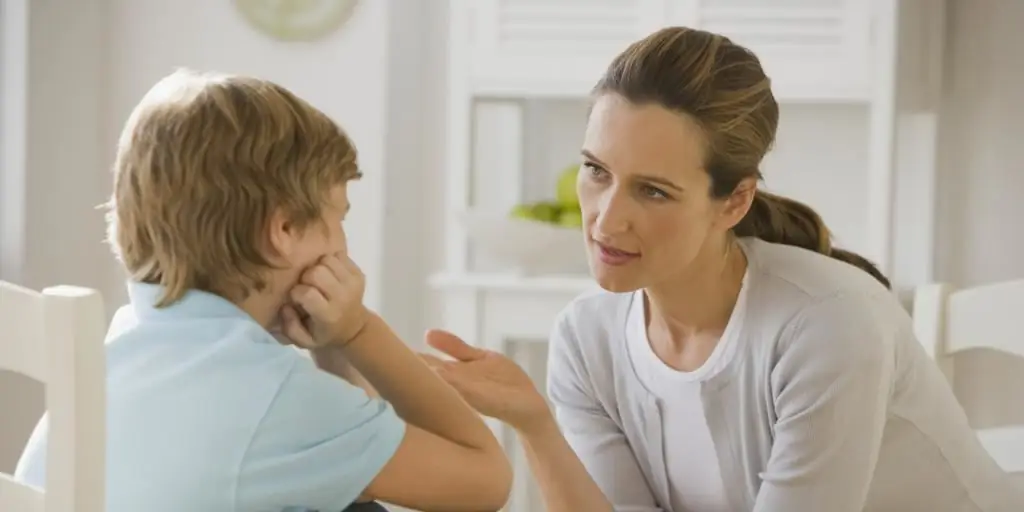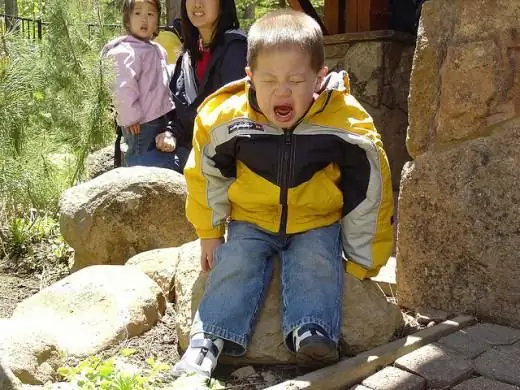2025 Author: Priscilla Miln | [email protected]. Last modified: 2025-01-22 17:55:22

For some, the winter holidays are the time for sledding, skiing, snowballs and ice skating. However, for many children, this is a period when the risk of getting sick increases, a runny nose, cough, and fever appear. And if a simple SARS or acute respiratory infections do not pose a particular danger to the baby, then bronchitis is a serious disease that can lead to the development of pneumonia - the main cause of death in children under the age of 4 years. Therefore, we begin our article with a warning: if your child has had a fever, cough and runny nose for several days, call a doctor. So, the doctor told you that the child has bronchitis. How to treat this disease? The doctor will also tell you about this, based on the age and condition of the patient. We will give general information.
First of all, let's see what happens in the body when a child has bronchitis? How to treat - a little later.
Bronchitis is the formation of phlegm (mucus) in the inflamed bronchi. Mucus comes out in the form of a runny nose, which the child blows his nose, and sputum is coughed up. That is, ifthe child stopped coughing - the inflammation was gone.
What causes bronchitis?
1. Infection (virus, bacteria, or both).
2. Allergens.
3. Harmful substances (exhaust fumes, cigarette smoke).
Therefore, the reason that a child has frequent bronchitis may be unsuitable living conditions. If they are changed, such as moving away from an area where the allergen blooms, the disease may not return.

Also, this disease is classified by the duration of the course:
1. Acute bronchitis - 10-20 days.
2. Recurrent - three times a year or more.
3. Chronic - three months or more every 1-2 years.
Before we move on to the question: "What to do? The child has bronchitis!" - note the main symptoms of this disease:
1. Whistling wheezing is a clear sign of the so-called obstructive bronchitis.
2. Most often, everything starts with a runny nose and cough, then the temperature suddenly rises (up to 38.5-39⁰С).
3. "Gurgling" wheezing when inhaling and exhaling or hard breathing.
Only a doctor can distinguish rhinopharyngitis (inflammation of the pharynx and nasal mucosa) from bronchitis and pneumonia. He will listen to the lungs and tap the chest with his fingers to assess the condition of the lung tissues. So don't diagnose yourself.
If the diagnosis of "bronchitis" in a child is confirmed, how to treat it depends entirely on the nature of the disease: a virus, a bacterium, or both at the same time. In the last twocases, the mainstay of treatment is antibiotics. Be sure to take a blood test, the results of which will give an idea of the cause of the disease. If bronchitis is recurrent, an analysis is performed - sputum culture.

Viral bronchitis is much easier, sputum is clear and slightly yellow. Sometimes, even without treatment, the disease disappears. In the bacterial form, there is pus in the sputum, the baby is weak and may refuse to eat. If the child is not treated, this condition lasts a very long time. Therefore, while maintaining fever and severe cough on the third day, start taking antibiotics. If you notice traces of blood in the baby's sputum, tell the doctor about it! This may be a symptom of a serious lung disease.
So, a diagnosis of "bronchitis in a child" was made. How to treat and how?
1. Ensure the humidity in the room. It is better to buy a modern humidifier, but if this is not possible, hang wet towels on all radiators.
2. Don't feed your baby if he doesn't want to.
3. Give your baby as much liquid as possible. Everything will do: tea, water, juice, compote … This will help thin the sputum.
4. Do not bring down the temperature to 38 degrees - it helps the body in the fight against viruses.
5. Take antibiotics only as directed by your doctor.
6. If antibiotics are taken for more than 5 days, give the child any means to prevent dysbacteriosis.
7. Do not give cough medicines without the advice of a doctor! Yes, don't be surprised! Mucolytics are prescribed only for severeduring the course of the disease, and for children under two years of age, they are completely contraindicated.
8. Inhalations. The type of this procedure (steam, oil, etc.) will be prescribed by the doctor.
Recommended:
A child of 3 years old does not obey: what to do, the psychology of the child's behavior, the causes of disobedience, advice from child psychologists and psychiatrists

It is quite a common situation when a child of 3 years old does not obey. What to do in this case, not all parents know. Many of them try to calm the child with persuasion, shouting and even physical impact. Some adults just go on about the baby. Both of them make mistakes. Why does a three-year-old child not obey and how to stop it? This post will answer these questions
What is the correct treatment for obstructive bronchitis in a child?

As a rule, the treatment of obstructive bronchitis in a child consists of very simple rules: drink plenty of water, humidify the air and inhale. True, observation and consultation with a doctor are simply necessary, if only in order to avoid the deplorable complications that can often occur in children
Child (2 years old) often freaks out and is naughty. The mental state of the child. Hysteria in a child

Expecting a baby is always full of joyful dreams, plans and hopes. Parents paint their future life with a baby in bright colors. The son or daughter will be beautiful, smart and always obedient. The reality turns out to be somewhat different
Obstructive bronchitis in infants: symptoms and treatment. Drugs for bronchitis in children

What is obstructive bronchitis in infants? How to treat it? How to recognize? You will learn about this and much more from this article
How to treat sinusitis in a child: drugs and folk remedies

Sinusitis in a child is considered the most common complication of colds. This is due to the structural features of the skull and nasal passages. However, sometimes parents begin to struggle with a problem that does not exist. Therefore, it is important to know exactly how the disease proceeds in children and what to do so that it does not develop into a chronic one

